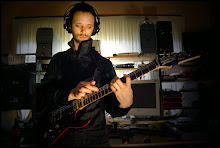Audio Arts – Week 7 – “Recording the Piano”
Being the Pianola robot for the day, I felt a little cut off from the sound engineering side of the fence at times. Then again I did get to work on my mediocre keyboard technique, which, as you will find out upon listening to the examples below, is just as bad as ever…Harsh self-criticism aside, the exercise did give me some fresh insight into the art of capturing the soul of a great piano. It just so happened that the tuner was onsite for a regular service of the EMU Steinway as we were setting up mics, so there was no excuse for bad intonation. The piano in question sounds great in any position in the room to my ears but probably best in the centre where we chose to record it. That being said, making a great sound and capturing a great sound are two very different things.
Honky Sonata:
This example is the result of a combination of three dynamic mics. The Beta 52 and MD-421 were placed under neath the soundboard on the bass (long) side of the piano. The SM-57 was placed above and at 45 degrees to the treble strings close to the keyboard. The first impression this may give is a quirky sound of low quality, which technically correct I guess, but if a honky tonk piano sound was the desired effect then a successful outcome has been achieved.
Roomy Sonata 1 & 2:
An example of the same section first using the mid-side technique but substituting the bottom mic from the MS pair with an MD-421 under the soundboard, and an NTV for a room mic. The second example uses the MS configuration with the NT5’s being used as a stereo pair for room mics.
Prelude no.1:
For this Bach Prelude I have provided two examples of the mid-side technique without a room mic for easier comparison. The first example has the U87 on top set to figure 8with the Akg Buls underneath set to omni. This seemed to be preferable to John and Luke at the time, but upon closer inspection of the second example with the polar patterns of the mics inverted (positions remaining) I think it produced a softer less ‘honky’ recording.
Prelude no.21:
A simple approach was adopted here, trying out the spaced pair idea touched on briefly by David G. at the end of Tuesday’s lesson. The winner here is clearly configuration 1, which placed the U87 above the strings at around 45 degrees to the soundboard at the treble end, and the NTV at the bass end with similar positioning. The recording is quite rich and resonant considering there were only two mics involved. Switching the positions of the mics produced quite the opposite however, so live and learn…
Click here to link to online folder containing audio examples.
Reference:
David Grice. “Audio Arts – Wk 6 – Recording the Piano.” Tutorial presented at EMU space and Studio 1, Level 5, Schultz building, University of Adelaide, 24th April, 2006.



0 Comments:
Post a Comment
<< Home